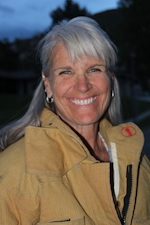When discussing FirstNet, it is helpful to understand the past in order to best prepare for the future. It is important to recognize that this isn’t happening to us; it’s happening because of us. Key players within fire, law enforcement, EMS, emergency management (EM) and communications have propelled us to where we are today. As our leadership continues to press for optimization of FirstNet and how it will transform communications for public safety service providers, much of its functionality will ultimately be up to us, the end-user.
Clearing the air
What do you think of when you hear the term FirstNet? Is it a familiar term? For those who have been tracking its development, it likely has a clear definition and meaning. For many others, however, it may still be a bit nebulous or mysterious—or perhaps not even on the radar.
As FirstNet becomes a reality, and discussion and interest intensify, so do the opportunities for mixed messages and misinformation to complicate the discussion. Because of the potential impact of FirstNet for public safety, it is important that first responders within every tier of the community understand what it is.
The development of FirstNet positions the emergency response community for one of the most significant service model transformations we’ve experienced in decades. I’d go so far as to say that we haven’t seen this kind of advance since we put the horses out to graze. But even changing from horses to horsepower was met with apprehension, uncertainty and resistance. Change is rarely easy. When people are asked to change, it usually requires them to let go of what they’ve known and be willing to consider what is being proposed as a better alternative. Trust and understanding help reduce the reluctance to step away from what is familiar toward a perceived unknown.
FirstNet—the What and How
What is FirstNet and what makes it different from what we’ve had in the past? The name comes from combining the words first responder with network. In a nutshell, it is roughly 20 MHz of prime bandwidth real estate on the wireless spectrum that the federal government has designated solely for public safety. In the past, we had to compete with the general public for spectrum use during large-scale emergent or non-emergent events. FirstNet now provides unparalleled access that will enhance how we talk, message, stream, and download data on a multitude of devices. It’s like a data HOV lane just for us.
The development, implementation and sustainment of the program are managed by the largest private/public partnership in the history of the United States. First Responder Network Authority[1] represents the federal government, and FirstNet built by AT&T[2] is the private partner with the technical expertise. An additional layer of customer service is accomplished by the FirstNet Association, which will further support the FirstNet ecosystem through advocacy, outreach, education and leadership.[3]
Why did the federal government get involved? Following 9/11, many searched for answers to prevention, mitigation, and improved preparedness and response to large-scale events. The 9/11 Commission Report identified deficiencies in our communication model, not only with information-sharing among response agencies, but also in communications in general during an emergency response. The Commission Report called for “expedited and increased assignment of radio spectrum to public safety entities.”[4]
The public safety communications solution would have to be twofold, however; there was the What and then the How. We had to ask ourselves, “What problems are we trying to solve?” Immeasurable sums of money were invested during the immediate post-9/11 era, yet by 2008 we still didn’t feel any closer to solving the reliability and interoperability problems we’ve wrestled with for decades. We needed an answer that would allow us to communicate when we wanted to whomever we needed, seamlessly.
Public safety had been allocated 10 MHz of bandwidth, which was being managed by the Public Safety Spectrum Trust. To many, however, it was clear that wasn’t enough space to satisfy the What public safety required. As a result, the leadership within the International Association of Fire Chiefs (IAFC), Association of Public-Safety Communications Officials (APCO), Metro Fire Chiefs, National Sheriff’s Association (NSA), International Association of Chiefs of Police (IACP), Major City Chiefs Police Association, Major County Sheriffs of America, National Emergency Managers Association (NEMA), and National Association of State Emergency Medical System Officials (NASEMSO) formed partnerships with key Congressional and Executive branch leadership within the federal government. The result of this collaborative effort was Congress securing uninhibited connectivity for public safety agencies by designating the D Block section of the wireless spectrum in 2012.
After securing the bandwidth, it then became clear that the federal government would not be able to fund the projected costs to build out and maintain the network to mission-critical standards. The How became the next immediate question. Representatives for the interest of public safety did not waiver on the mission-critical requirements. Priority, preemption, redundancy, reliability, security, coverage and adaptability were not negotiable. This strong presence and representation for public safety created a new dynamic. The carriers were no longer calling the shots.
Attempts were made by multiple carriers to divvy up the D Block, or what is now more commonly referred to as Band 14, so they would all get a piece of the pie. In doing so, however, we would be trading one patchwork quilt for another. We could not allow the ongoing proprietary battle between carriers to drag down our forward progress. There was also the concern about a “tragedy of the commons” situation, best described as “a situation in a shared-resource system where individual users acting independently according to their own self-interest behave contrary to the common good of all users by depleting or spoiling that resource through their collective action.”[5] A government project of this magnitude would require robust oversight. Putting the project out to bid in order to identify the most qualified provider to partner with was the only way to assure success.
The process was driven by strict criteria set forth by public safety leadership and the federal government. In this case, there was the How and the How Much. The Request for Proposal (RFP) included the mission-critical deliverables mentioned earlier. It also included a 25-year commitment to rigorous oversight and benchmarks, which, if not met, could result in seven-figure penalties. This includes quarterly reviews by the First Responder Network Authority and annual Congressional budgetary oversight. The final piece was the private partner’s financial investment that would support building and maintaining the infrastructure and supporting the implementation and function. The price tag: $40 billion over the first 25 years.
Although only three bids were submitted, had the applicants not met the requirements of the RFP, it would have been reissued. After extensive review, AT&T was awarded the contract, but they were still not free and clear to proceed. Lawsuits ensued, contesting the process and the sole access to Band 14 by the awardees. The bid process and the litigation spanned 14 months, yet AT&T prevailed in the end. Enduring both the bid process and judicial scrutiny further validated confidence in the selected carrier. This process was finalized in 2017.
In addition to the high standards set forth in the carrier contract, the federal government also required each state or territory to ensure access to FirstNet for the public safety entities within. Governors and territorial leadership were given three options:
- Opt in to having the contract awardees build out the necessary infrastructure within their respective areas.
- Contract with a third party that would be able to meet all of the performance criteria set forth and agreed upon with AT&T. (As of early 2018, all 50 states and U.S. territories opted for the AT&T FirstNet solution.)
- Do nothing before the deadline and that would be considered an automatic Opt In.
When a state or territory “Opted In,” it meant that they selected AT&T to manage the FirstNet within their state or territory. It did not create an automatic mandate for all public safety entities within the given state or territory to utilize FirstNet; it just guaranteed them access.
Another term that may need clarification is the state contract. Think of a state contract in the same light as a group purchasing order (GPO), much like the Western Fire Chiefs division has created for several fire-related products. The states’ contracts leverage the volume purchasing power of the state to the benefit of everyone. So if you’ve heard that your state has signed a contract, you are still not obligated to participate in FirstNet. There won’t any strong-arm tactics designed to force participation. FirstNet operates with the philosophy, “If you build it, they will come.”
Think big
As you start to think about the possibilities of what we could do with 20 MHz of bandwidth, go big. You can start with enhanced cell phone capabilities, video streaming and unlimited data downloads from a command vehicle, real-time remote scene assessment and conditions accessed from your EOC, or immediate, en route downloading of building, plot or block plans for an emergency scene. Then consider how this will change Push-to-Talk over cellular. Imagine managing talk groups that will work safely and seamlessly within the framework of the National Incident Management System (NIMS), without compromising multiple channel monitoring. Where this goes will only be limited by our own imagination.
FirstNet was conceived and developed through the same kind of teamwork and collaboration we leverage on emergency scenes every day. It is that spirit of common purpose that will continue to drive all tiers of public safety toward the highest level of service.
What will truly make FirstNet stand out is the ongoing engagement with end-users and stakeholders at all levels of response. The FirstNet Association is dedicated to bridging the gap between end-users and those responsible for the continued build-out, evolution and maintenance of our system. FirstNet Association President Al Gillespie states, “Connecting end-users with the people responsible for the network's success will help ensure the FirstNet network evolves into the best possible version of itself.”[6]
With a decade of heavy lifting completed by a locked-step effort between fire, police, EM, EMS and emergency communications leadership, it is now up to us, the first responders to take this to its fullest potential. Do you have to be a FirstNet user to engage in the conversation? Absolutely not. FirstNet needs to become exactly what you and your agency need it to be so participation is driven by confidence and a sense of ownership.
“Our goal with this organization is to empower a new generation of first responders by providing them with the tools to participate in the advancement of their network," said Roger Wespe, executive director of the FirstNet Association. “FirstNet will succeed because first responders collectively choose to engage in this endeavor.”
References
[1] https://firstnet.gov
[2] https://www.firstnet.com
[3] http://www.firstnetassociation.org
[4] 9/11 Commission, The 9/11 Commission Report, Commission Report (New York: W.W. Norton and Company, 2004). p 397
[5] Wikipedia, April 8, 2018, https://en.wikipedia.org/wiki/Tragedy_of_the_commons.
[6] FirstNet Association Press Release, "Public Safety Leaders Unveil New Association Dedicated to FirstNet User Community," PR News Wire, April 3, 2018, https://www.prnewswire.com/news-releases/public-safety-leaders-unveil-new-association-dedicated-to-firstnet-user-community-300623649.html.

Martha Ellis
Martha Ellis has been in the fire service for 23 years. She has worked as a hot shot wildland firefighter and has served as a structural firefighter for nearly 22 years in the Salt Lake Valley. She holds a master’s degree in homeland security from the Naval Postgraduate School, a graduate certificate in conflict resolution and mediation from the University of Utah, and is a certified facilitator with the Arbinger Institute. She was also one of four recipients of the Harvard Kennedy School of Government fire service fellowship awards in 2012.






